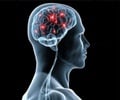Risk of psychotic disorders can now be detected by neurological brain markers, said researchers. Psychotic disorders like schizophrenia are often lifelong and disabling for individuals.

Researchers said psychotic disorders are associated with increased levels of dopamine -- a chemical released by nerve cells -- in a subregion of the brain called the striatum. This area is wired to process positive versus negative feedback for learning, often resulting in a person's thoughts and actions based on what they've experienced in the past. Therefore, researchers suggest that psychotic disorders involve a faulty feedback in learning that then drives a person's faulty beliefs and perceptions. However, measuring levels of dopamine in people is costly, invasive and not feasible in everyday clinical practice.
"This dysfunction is most evident when performing tasks where people need to learn from positive and negative feedback," Kerns said. "For instance, we have found that the risk for psychotic disorders involves increased activation in the striatum for positive feedback, and negative feedback involves decreased activation in the same subregion of the brain."
Researchers believe this pattern of activation could explain symptoms of psychotic disorders. For example, activation resulting from increased positive feedback could make a person's assumption seem truer than it really is, meanwhile activation from decreased negative feedback could make someone less likely to discard negative ideas. The team will conduct future research to examine how well an MRI can predict the risk of psychotic disorders and whether prevention treatments can 'normalize' MRI scans. They hope that their research will help prevent psychotic disorders, improve the lives of millions of people and greatly reduce public health costs.
Source-Eurekalert













